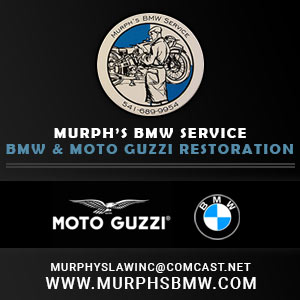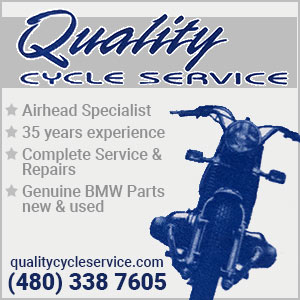New member. Engine and carbs sitting on workbench, pics attached, now what??
Hello all, new member here and happy to have found the group. I have done a few frame off restorations on old Jeep CJ7s but this is my first motorcycle project and I'm loving it already. Here is where I am currently:
I bought a 1992 R100RT, 24K miles, started up and ran pretty well last week before I stripped it down to the bare frame. I have the engine out and it is on my workbench ready to be worked on. My questions are as follows:
-I am not interested in a complete engine overhaul if I can avoid it, especially with the warmer weather on the way. Love to hear your expert opinions on what are a few "must have" items to inspect/change while its on the bench without going too deep?
-Is there an extensive mini-overhaul/service type of kit that would include the necessary gaskets/seals to tackle the job?
-I am planning on replacing the clutch - any thoughts/brands there I should consider before doing so?
-My tool collection over the years has grown pretty extensive, however are there any necessary that should have on hand for the engine work?
- One of the carbs was leaking fuel pretty bad. I would love to find a place to send out both carbs to be rejetted and rebuilt, any recommendations?
I live on the Eastern Shore of Delaware, hope to connect with a few local members for advice and again, glad to be a member of the group! -Mike
Welcome to the ABC !
Sorry to disappoint, but nothing needs to be done to your Airhead engine or clutch except put it back in the frame and ride it ! Heck, it's just barely broken in !! If additional mileage turns up any oil leaks, then all that can be done easier with the engine in the frame.
► You should replace several items in the carbs due to ethanol in the fuel....
• All the gas line (use the US made 1/4" ID marked SAE J30)
• Both floats
• Both float valves
• Both rubber intake tubes
• Replace the small jet (which I think is a #45) in both carbs
• Blow out the starting jets in the bottom of the float bowls
• And lastly check the diaphragms for any holes or rips (if any, replace both)
► Strobe time the engine at high RPM using the "F" mark on the flywheel
► Buy a shop manual and learn how to dynamically adjust the carbs at idle and adjust the throttle cables at 1500 RPM
► The trouble point on your bike is not the engine, clutch or gearbox, but instead the single-sided final drive. The big bearing is highly stressed and wears quickly if the oil is not kept changed and topped-up. ANY play in the rear wheel is a sign the final drive is near death.
► The other trouble point, to a much lesser degree, is the single shock. Your OEM shock is probably dead. The bike isn't going to handle worth a toot until it's replaced and they cost big bucks. So you probably DO NOT want to spend money on needless engine parts, and instead start saving your hundred dollar bills for a new rear shock.
Hope this helps. 🙂
Owning an old Airhead is easy.
Keeping an old Airhead running great is the true test.
Thank you both for the detailed responses and I am happy to hear the consensus of not needing to do major engine work, especially with the riding season upon us.
As I embark on a few of the work items you guys suggested, is there an engine seal/o-ring kit that I can pickup that will have the necessary items rather than trying to source each piece individually? I will need various boots/fittings, etc - all those LITTLE parts that you find out you will need as you start to reassemble the engine and bike that halt progress on a saturday afternoon!
Also along the same lines, I remember I bought a full stainless hardware kit when I did my frame off restoration of my my CJ7 which made reassembly with all new bolts and hardware a breeze. Does something like that exist for the airhead rebuilds?
Thanks again, what a great site!
Mike -
That was one of the biggest shocks to my system after coming to BMW. Some dealers will prepare small kits, but BMW seems to sell everything by the piece part. Get used to looking at parts fiches, my friend. After 2 or 3 years you'll start to think like a German, and it will all become very clear. 😆
One of the big differences between car and motorcycle work is that most all the bolts on a motorcycle are doing multiple jobs and are typically highly stressed. You'd do well to recognize that common stainless steel bolts are about 1/2 to 1/3 the strength of the OEM steel fastener. There are indeed strong stainless fasteners available, but you had better have some deep pockets like the DoD or NASA to afford them. The 3 or 4 fasteners that can be safely substituted are easily had at the hardware store.
All the best.
Owning an old Airhead is easy.
Keeping an old Airhead running great is the true test.
The Engine Control Unit (ECU) is mounted on an aluminum heat sink, and the heat conductive paste between the two can dry out and allow the ECU to overheat. Remove the fasteners holding the two together (sometimes rivets must be drilled out), clean the surfaces, and apply a generous coat of heat sink paste to both surfaces before reassembling. Do not use dielectric grease or any other grease or paste you have on hand. If you can't find it locally, go online and get the real stuff.
Fully agree with this point.
Having retired from the Military electronics industry, and knowing that my company tested lots of heat sink pastes before standardizing on one in particular, I will share the product's name... Arctic Silver.
Link to Arctic Silver on Amazon
The object is not to be overly generous. The object is complete surface coverage. You want to achieve the thinnest coat that fully covers and joins the two surfaces without air bubbles or voids. A central puddle that is spread with the edge of a credit card (yours, not mine 😛 ) usually does the trick. Then, the application of correct fastener torque to insure the surfaces to not end up bowed or warped.
Hope this helps.
Owning an old Airhead is easy.
Keeping an old Airhead running great is the true test.
- 27 Forums
- 1,952 Topics
- 11.1 K Posts
- 3 Online
- 11.9 K Members





